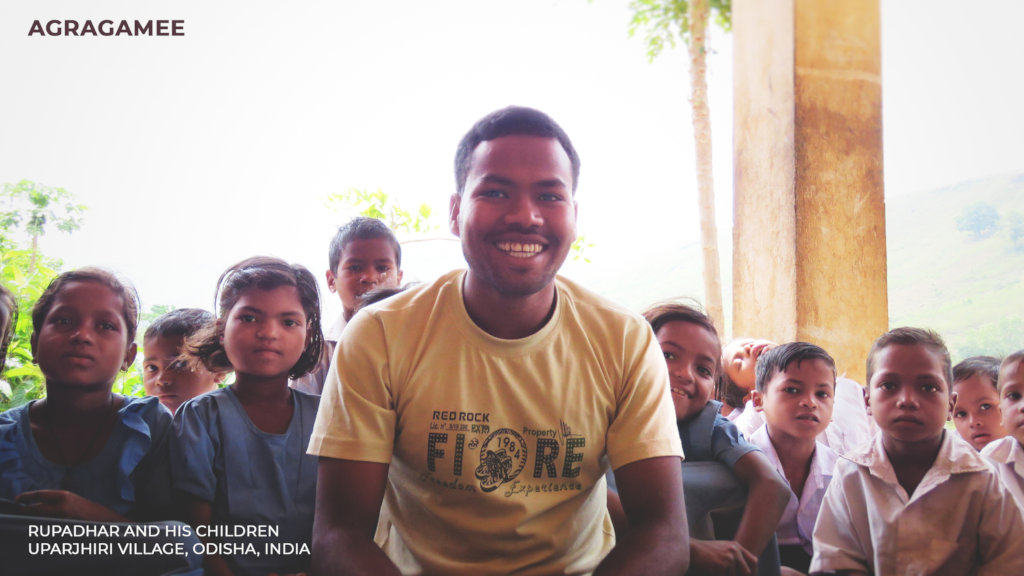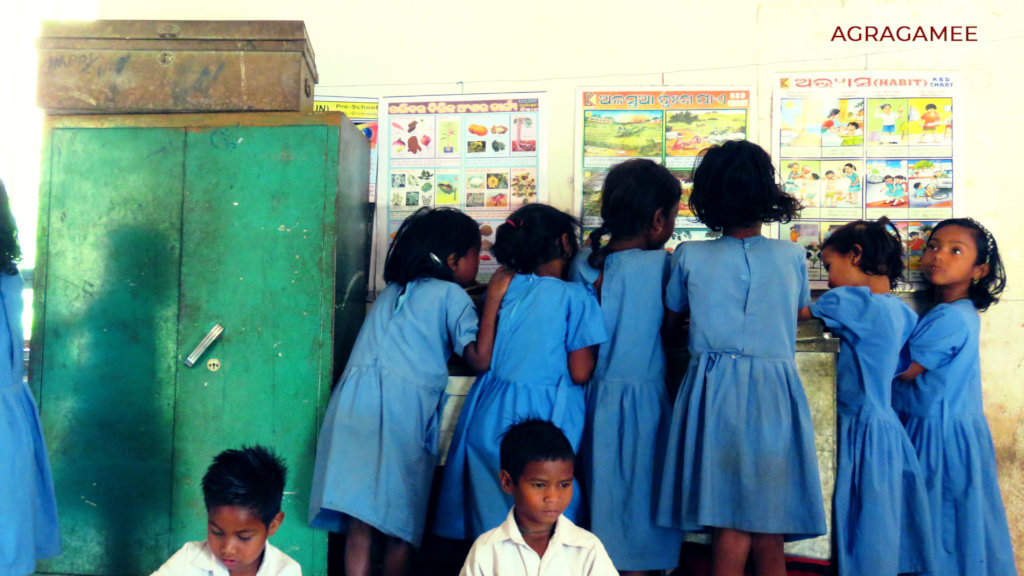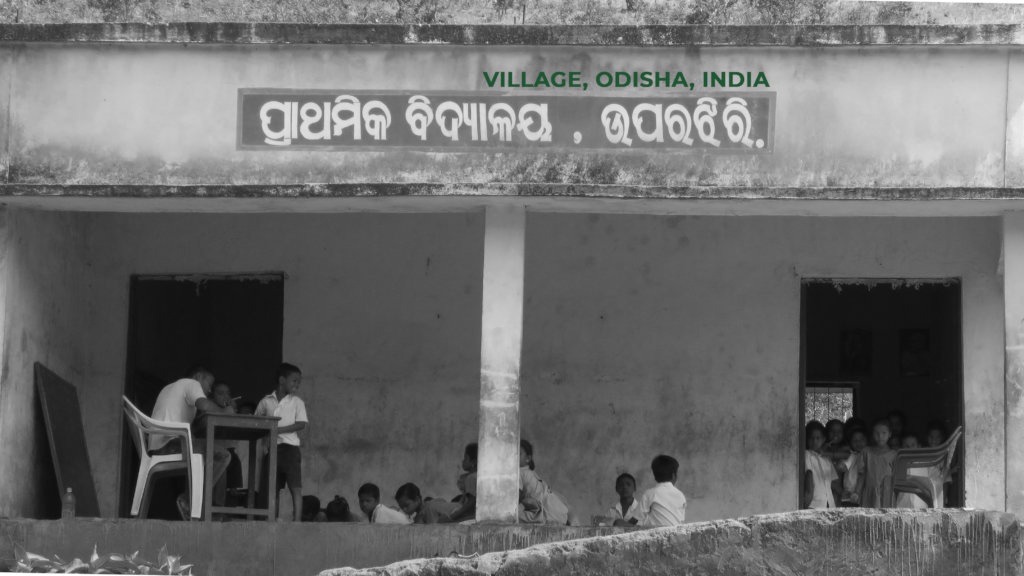By Shailesh Gupta | Education Co-ordinator
"Rupadhar (Education Supporter) says Schools were mundane when he used to study (6 years ago) and they were deprived of colorful charts, toys or wall arts. Schools can be portrayed as dark rooms with blank walls and fear lingering around. Illustrated and colorful charts help classroom to look vivid and pleasing to children’s eyes."
In a multi-grade classroom, it is important to find interesting ways to engage children while the teacher is involved in teaching other grades. This helps in preventing children's interest in education and school. Early graders are unable to decipher Regional language in these story charts as the regional language and tribal language are extremely dissimilar. Images help them visualize the story and relate symbols to weave new stories.
We reached Uparjhiri village, Odisha at 7.00 AM while Rupadhar was teaching children of I and II graders in School’s verandah. We found other children were involved in playing with toy cars and games. Rupadhar does not restrict the usage of toys and books unlike other schools in villages. It is often found that these toys are locked upon for bounding children to break them apart. In this school a sense of ownership and sharing among children is common. Walls are carefully illustrated with story charts, action charts, poem charts and others.
Moving around classroom we came across an impactful visual. A group of six girls was playing with their monkey soft toy facing the chart. After close observation we found, three of them were trying to read from the story chart and was helping each other to read. They were also constructing their own stories. Two idle girls were watching them read and trying to hear stories. With all this, they were laughing and playing with their soft toy too. The last one tried to read the chart about vegetables and leaves.
It is interesting to notice that these visual aids are encouraging them to read and to imagine and construct their own stories. These Teaching-Learning Methods is helping us to create a playful and lovable ambiance for children.
Children and our education supporters belong to the same village and their community speaks Tribal language called "Pengo". They inspire each other to reach school on time and attend schools regularly. Chances are if Rupadhar is late to school, children will come and knock at his door.
Speaking same tribal language helps children to look upon their teachers as immediate inspirations and studying an alien language becomes easier for them to comprehend.
Links:
By Vidhya Das | Joint Director, Agragamee
By Vidhya Das | Joint Director, Agragamee
Project reports on GlobalGiving are posted directly to globalgiving.org by Project Leaders as they are completed, generally every 3-4 months. To protect the integrity of these documents, GlobalGiving does not alter them; therefore you may find some language or formatting issues.
If you donate to this project or have donated to this project, you can receive an email when this project posts a report. You can also subscribe for reports without donating.




